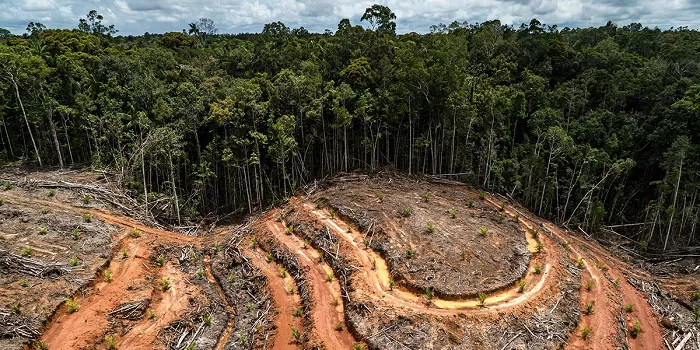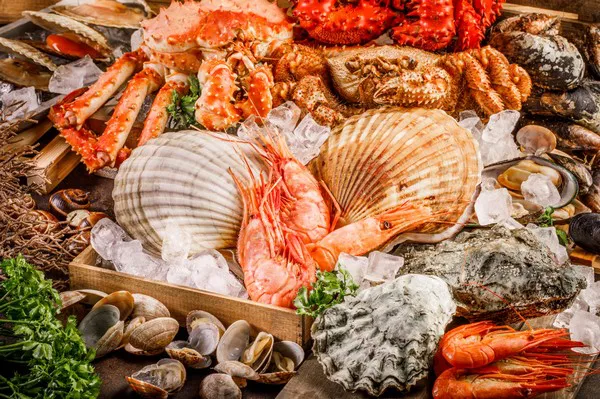JAKARTA — Excavation equipment has commenced operations in Papua, Indonesia, marking what is being hailed as the world’s largest deforestation project. The initiative will clear approximately 2 million hectares (5 million acres) of forests, wetlands, and grasslands in the Merauke district to create a vast network of sugarcane plantations, part of the Indonesian government’s strategy to enhance domestic sugar production.
Five consortiums, comprising both Indonesian and international companies, have been enlisted for the 130 trillion rupiah ($8.4 billion) project, which encompasses various roles from developing sugarcane plantations and processing facilities to constructing power plants to support operations. Notably, PT Global Papua Abadi (GPA) has already begun seeding in its concession, with President Joko Widodo, popularly known as Jokowi, planting the first seeds during a ceremonial event on July 23.
“I see that the land here is flat and there’s plenty of water. I think this is an opportunity to turn Merauke into Indonesia’s food barn,” Jokowi remarked at the ceremony.
However, satellite monitoring by the technology consultancy TheTreeMap indicates substantial land clearings within GPA’s concession since June 2024. The organization reported that at least 356 hectares (880 acres) of forest have been cleared, contradicting government assurances that efforts would be made to minimize environmental impact by avoiding forested regions. Senior officials have claimed that little natural forest remains in Merauke.
“There’s no forest in the middle of Merauke,” asserted Indonesia’s energy minister, Bahlil Lahadalia, who leads the governmental task force overseeing the project. “There’s only eucalyptus [trees], swamps, and savannas.”
David Gaveau, founder of TheTreeMap, acknowledged that while southern Merauke’s ecosystem consists primarily of savanna and grassland, there are also closed-canopy evergreen forests present, making the region ecologically unique.
In addition to the clearing of natural forest, some areas designated for the sugarcane project appear to fall within a government-declared protected zone under a moratorium program. Established in 2011 and made permanent by Jokowi in 2019, the moratorium prohibits the clearing of primary forest and peatland not previously allocated for plantation or logging. The Ministry of Environment and Forestry regularly updates a map indicating protected areas every six months.
The Pusaka Foundation, an NGO collaborating with Indigenous peoples in Papua, has overlaid the sugarcane concession map with the moratorium map and discovered that 30% of the concessions, totaling 145,644 hectares (359,894 acres), are situated within the moratorium zone. Although this figure may not be entirely accurate due to the format of the concession maps used in the analysis, it suggests that natural forest still exists within the project area, according to Pusaka Foundation director Franky Samperante.
“This project poses environmental risks, particularly in the form of increasing greenhouse gas emissions from deforestation,” he stated.
The cleared land primarily consists of savanna and grasslands from the Trans Fly ecoregion, which spans 2.6 million hectares (6.4 million acres). This area is among the largest and healthiest wetland systems in the Asia-Pacific region and is home to diverse ecosystems.
The Trans Fly region features unique plant and animal species, including endangered species like the dusky pademelon (Thylogale brunii) and the Fly River grassbird (Megalurus albolimbatus). UNESCO has described the region as exceptionally rich in avian biodiversity, housing more than half of New Guinea’s total bird population, including 80 endemic species.
Concerns are also mounting regarding the rights of Indigenous Papuans, who have reportedly been excluded from consultations about the project. Faisal Basri, a prominent economist at the University of Indonesia and critic of government policies, highlighted the lack of engagement with Indigenous communities during a seminar in June. He referenced a similar megaproject initiated in 2011, known as the Merauke Integrated Food and Energy Estate (MIFEE), which aimed to convert the area into Indonesia’s “breadbasket” but ultimately failed, facilitating land grabs by companies.
“This should be more than enough reason for the government to scrap the sugarcane project,” Faisal argued. He further criticized the imposition of industrial agriculture on the lands traditionally managed by hunter-gatherer communities, noting the government’s failure to consider the cultural differences of Indigenous Papuans.
In response to these concerns, GPA has stated its commitment to transparency and involvement of Indigenous communities in the project, aiming to map concessions alongside them to identify areas overlapping with ancestral lands.
“We want to ensure that Indigenous peoples understand the extent of their ancestral lands managed by the company and how sustainable management will be implemented,” said GPA surveyor Ikrar Bakti.
However, human rights lawyer Frederika Korain emphasized that without allowing Indigenous Papuans to have a say in the management of their lands, meaningful participation and consent cannot be achieved. She criticized Bahlil for imposing his authority over lands that belong to native Papuans, questioning his legitimacy to make decisions regarding these areas.
“It’s very easy for the minister to come and earmark [lands] as he pleases,” Frederika remarked during the seminar. “Let me ask him, where do you have your ancestral right in [Papua]? Where did your ancestors live? You’re not Papuan, so how can you come [to Papua] and declare this region a place for investment?”
You Might Be Interested In:
























